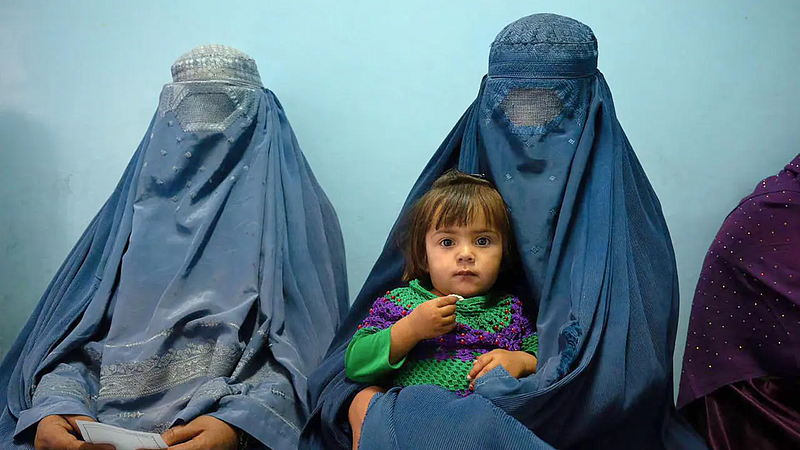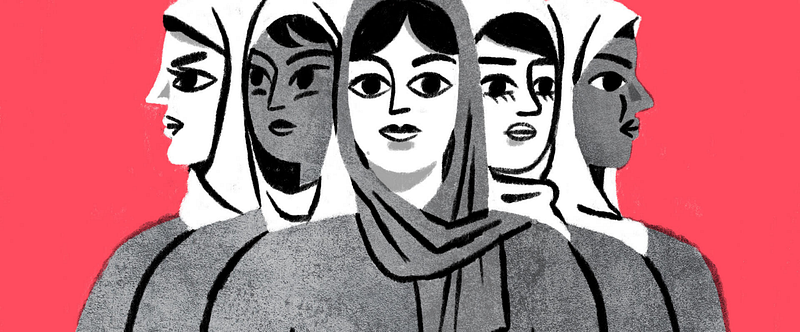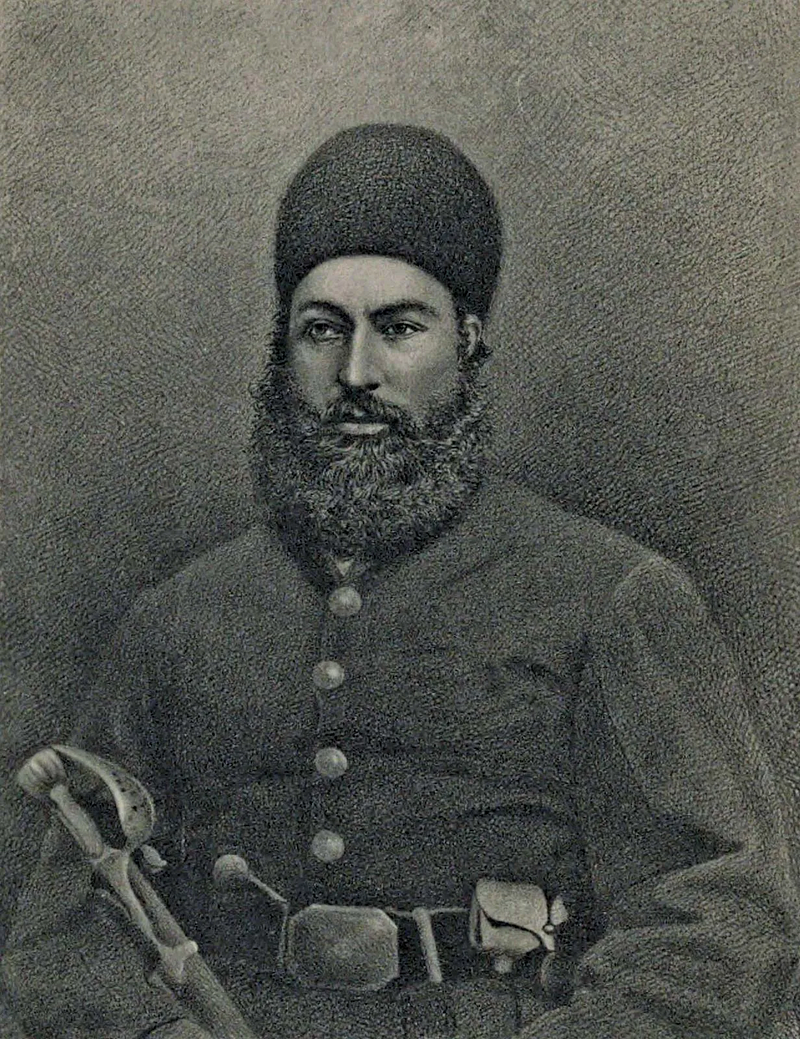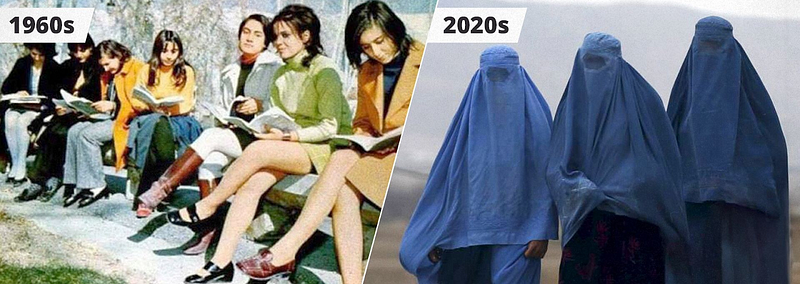The Rabbit Hole of Gender-based Discrimination Under the Taliban Regime
“We, Afghan women, must fight for our rights and work towards our economic and intellectual independence. A woman who is dependent on the…
“We, Afghan women, must fight for our rights and work towards our economic and intellectual independence. A woman who is dependent on the financial support of her father, brother or partner is more vulnerable to violence and oppression.”
-Mahnaz Rezaie, Writer and Activist
We used to run through an open field,
Open the blinds while the sun was shining bright,
Hear our voices echo through the narrow corridors,
Recite silly poems and write silly rhymes,
Without any care in the world,
Without any fear in the world,
For we could still see a light,
A light that would change our lives,
alas,
When angry men stormed into the night,
The once open field, now a basement
The once open windows, barricaded by mud
The voices echoing through the corridors, were silent
the poems and rhymes, were too scary to write,
We lived in fright,
We lived with no pride,
Since the Taliban’s takeover of Afghanistan, the media has expressed its rage towards the mismanagement of governance and radicalisation of the Taliban regime. As seen from the viral footage of Afghanistan citizens clinging to the US air force jet in a desperate attempt to leave the country after the takeover of the Taliban, it is apparent that many Afghans fear persecution or reprisals under Taliban rule and hope to seek asylum or other pathways to escape the regime. Countless peaceful protests and demonstrations were held by the Afghanis to show opposition towards the Taliban’s regime — a regime that undoubtedly caused a humanitarian crisis and enforced gender-based discrimination. During the takeover, it was apparent that women in Afghanistan are disproportionately affected by the regime in comparison to men and this was mainly because of their strict interpretations of the Sharia law.

The new regime imposed by the Taliban effectively enforces women to be under house arrest. They were prevented from going to work, attending school beyond sixth grade, or accessing healthcare administered by men. And since many female doctors and nurses were dissolved from the healthcare industry, many Afghanistan women were deprived from seeking medical help. They also are required to wear a burka and cover their faces in public from the age of eight and be accompanied by a male guardian if they want to leave the house. The liberties taken away from Afghanistan women are a way of the Taliban reinforcing Afghanistan’s patriarchal system, whereby a man dictates every aspect of a woman’s life.
With all these restrictions imposed against women, it’s harder for women to access opportunities that allow them to escape the oppressive regime. Education is the only hope towards establishing a future for many young women in Afghanistan, as it allows them to progress into tertiary education and even enter the labour market, effectively allowing them to become independent breadwinners. But because women are pressured to be socially invisible, the regime prevents them from creating a name for themselves. Some Afghans already outside the country are looking for temporary protection or permanent legal status abroad. However, those who didn’t make it, find themselves entering a rabbit hole of inevitable subjugation to the regime. Women who were already in the labour market before the invasion of the Taliban, have already been told to resign from their respective posts and although private tertiary education is admissible for women, they are most likely to be barred from it due to the ban of obtaining a secondary education. Independent women are seen as a form of intimidation to the regime, and so it would make sense as to why the Taliban would effectively erase women’s participation in civil life in Afghanistan. The Taliban’s extremist values have mobilised beyond Afghanistan, as many liberal Afghanistan women working or studying abroad have been subjected to attacks. In 2016, an attack by suspected Taliban fighters on the American University of Afghanistan claimed the lives of 15 of the talented educators while injuring more than 100 other students, and security forces.
Even through all this chaos, we still see Afghanistan women not giving up on their liberties and are finding ways to keep empowering each other. According to vice news, since the ban of secondary girl schools across Afghanistan, it was estimated that women’s rights activists of Afghanistan have set up 100 to 300 secret schools throughout the country. Organisations such as PenPath, which is an NGO that works to reopen closed schools in the country’s rural areas, currently have 2,400 volunteers, including six women who give secret classes to secondary school-aged girls.
The schools are usually conducted in ordinary homes, secluded caves or basements around the country where female teachers hold lessons for one or two hours per day, focusing on maths, biology, chemistry, and physics. In the secret schools, it was reported that classes had a varying age, including women in their thirties, who had initially dropped out during the first Taliban regime from 1996–2001. The more secret schools being conducted means the more demand there is from young girls seeking an education, however, teachers are constrained by the lack of space and resources as well as the need to remain below the radar. In order to get to class, they leave home hours earlier taking different routes to avoid being noticed, and if asked by Taliban fighters, the girls would say they are enrolled in a tailoring workshop, and hide their school books in bags or under their abaya and burqa overgarments.
Believe it or not, before the Taliban invaded, Afghanistan had never endured a draconian misogynistic form of ruling. Women were not forced to wear burqas nor were they prevented from attaining education or participating in politics and the workforce. In fact, previous rulers such as Abdur Rahman Khan who reigned Afghanistan from 1880 to 1901 tried to change some of the customary laws that were detrimental to women’s status. For instance, he abolished the custom forcing a woman to marry her deceased husband’s next of kin, raised the age of marriage, and gave women rights to divorce under specific circumstances. It was said that Abdur Rahman Khan’s liberalist views were influenced by his wife Bobo Jan, who happened to be the first Afghan queen to appear in public in European dress without a veil. She had a keen interest in politics and was known to frequently discuss her ideas as well. But even after Abdur Rahman Khan’s reign, the modernisation and the liberation of women in Afghanistan continued to progress until the 20th Century. Afghan women were first eligible to vote in 1919 only a year after women in the UK were given voting rights, and a year before the women in the United States were allowed to vote. In the 1950s, gendered separation was abolished and in the next decade, a new constitution brought equality to many areas of life, including political participation of women.
It is safe to say that Afghanistan was progressing towards an era of modernisation from the early 1900s toward the 1960s, but what ultimately led to the downfall of the once progressive state? What powers helped build the Taliban movement and allow them to spread their extremist values on the once progressive state? 5 words: the United States of America. When Afghan communists took over in a 1978 coup, Afghanistan became caught between the Cold War politics of the time. At first, the communists enforced an even more dramatic campaign for social reforms, which included making education compulsory for girl’s and implementing a minimum age for girls to marry. But it did not take long before efforts to enforce communist ideology provoked a widespread conflict. Then, on December 24, 1979, the Soviet Union launched a full-scale invasion of Afghanistan in support of the faltering communist government. Within a few months the country was flooded with more than 100,000 Soviet troops. The Afghan resistance, known as the Mujahidin, fought a fierce guerrilla war against a substantially more powerful Soviet army. In the mid-1980s, the United States began to supply the Mujahidin with financial support and military equipment. Then, in 1989, after nearly a decade of constant war, the Soviets were defeated and effectively withdrew from Afghanistan territory. Instead of peace and the establishment of a new, stable government in Kabul; Afghan society sank into a long, protracted, bloody civil war. Political authority retreated to the hands of regional and ethnic powers — the same groups that had united to fight against the Soviets had now separated and fought against each other.
For Afghan women, it was the worst period, and having to undergo the same regime 2 decades later, is a cause for concern towards the mental health of Afghan women. According to the United Nations human’s right council, the situation for women is so desperate in Afghanistan that they are committing suicide at a rate of one or two every day. The severe oppression Afghan women go through, is a cause for urgent attention on an international level. The United States and concerned partners should enforce financial assistance and sanctions relief to incentivise the Taliban to respect women’s rights. It is the least that can be done in honour of the brave Afghan women who have and continue to stand up against the Taliban and their repression.
[Written by: Harshaall Medha Naidu. Edited By: Balvin Dhaliwal]






